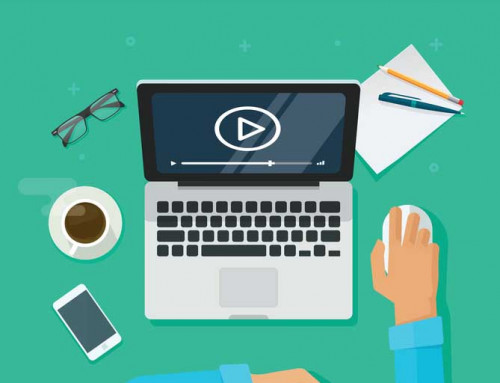How is your customer service? What do people say about how they’re treated when they call about a product or service that you offer? When you call someone about a product or service that you need, what has your own experience been? And how can eLearning make a difference?
The use of automated systems means that customer service begins before anyone even says, “hello.” So when a customer finally talks to a human being, their experience depends on how well your service staff is trained. In this post, we’re examining how eLearning empowers and enhances your customer service training. But first, we’ll look at the vital role that customer service plays in the success of any organization.
Even Your CEO is Part of The Customer Service Experience
In essence, every person who works for any organization is a potential customer service representative. That may seem like a broad stroke. But think about it: whether you’re talking to the CEO or the custodial staff, you’re talking to a representative of that company. And some companies, like Walt Disney World, are very aware of this. In fact, everyone who works at Walt Disney World – and we mean everyone – goes through Disney’s Traditions training. A large portion of Traditions involves customer service training of the highest standards of excellence. And it works: the Walt Disney World corporation operates at a level of customer service that even other corporations talk about.
For the purpose of this post, we’ll focus specifically on the people who staff the front lines of customer service. They’re the folks who answer your phones and talk with your callers and customers. They sell your products and services. They make appointments, take messages, and solve issues. They listen, offer advice, upgrades, and refunds. They take responsibility for issues that very often have nothing to do with them. Within the boundaries of organizational guidelines, policies, and procedures, they work to keep your customers satisfied. They straddle the boundary between the organization and its customers.
Consider: while a customer service representative’s loyalty is to the company, they actually often work for the customer. They are the face and/or voice of your company. As far as your customer is concerned, your customer service representative is your company. You talk to customer service personnel when you require a product or service. And you know how important it is for you to have your needs met and your issues resolved. The confidence and empowerment of your frontline service folks are more than just a passing notion or a nice idea: it should be part of the heartbeat of your company.
There are those who believe that you cannot teach customer service, that a person is either good at it, or not. And on the surface there’s some truth to that: we all know someone who is not a “people person”. For those people, customer service positions are not a match for their abilities, personalities or temperament. And we relegate those people to positions away from the public eye (or ear).
But let’s look deeper.
Customer support is a fine art. It requires a masterful balance of the interests of the organization with the satisfaction and needs of the customer. And the two are intricately related. It’s a dance. Customer service is a skillset. And anyone can learn – and practice – a skillset. It takes time, experience, practice, and guidance.
A good customer service training program prepares your customer service representatives for any potential person — or situation — that they may encounter. An excellent customer service program empowers employees to take what they’ve learned, apply the knowledge, and expand on it. Employees get to create and develop a personal expression of service, without sacrificing the standards of the organization. And this is one of those places where eLearning works its magic.
Consider that your representatives are going to be interacting with human beings, whether face-to-face or via phone. Therefore, their training should be a match for the challenges of customer interactions that are unique to your business/industry. However, there are some foundational elements to effective customer service training:
- Blend instructor-led training with eLearning.
- Balance the time spent with an instructor with scenario-based video clips, webinars and other interactive media.
- Feature your best customer service personnel in different real-life interactions with your customers. (By the way, this has the added benefit of acknowledging and validating your best performers.)
Scenario-based training allows for real-life application and prepares your employees for the real-world situations that they’ll face. eLearning interactivity can be used to train your customer service team in areas such as:
- body language, and how they present themselves to the public
(including attire and grooming, where relevant); - effective interactions by phone;
- listening for the issues behind the complaint;
- resolving the issue, rather than simply placating the customer;
- security and safety.
Employees can also be presented with simulations where they learn to prevent escalation while upholding organizational policies and procedures. And eLearning takes place within the safety of a simulation. In other words, trainees receive the benefits of experiencing real-life situations without compromising their own personal safety, their job security, or the reputation of the organization. With eLearning, even the worst mistakes become some of the best opportunities for both training and development.
In addition, you can standardize your training, and track the progress of your trainees. In the meantime, you also provide training that benefits your employees outside of the workplace. After all, customer service is a skillset that has benefits beyond the time-clock. Most importantly, an eLearning-enhanced customer service program creates flexibility, engagement and fun.
Another major advantage of eLearning that’s worth reiterating is the ability to capture the legacy knowledge and experience of your best employees. Using video, high performers can contribute ongoingly to your training program. Video also allows you to capture and preserve your best practices and legacy knowledge.
And, the use of video goes a long way to standardizing your program, which preserves your knowledge base as well as your organizational and branding message. At the same time, interactivity empowers your employees to develop their individual expression as they train and learn together.
As we said earlier, it actually begins before “hello.” Various studies show that it takes about 7 seconds to make a first impression. And that first impression is lasting, even permanent. The same is true of customer service. We’ve all experienced customer service of varying levels. Depending on the experience, we may leave ranting, or raving. And it’s the raving we want — those “WOW!” moments — no matter which side of the interactions we’re on. Those are the experiences that have customers coming back for more. And if we do it right, our customers might just bring their friends along with them when they return.
Before anyone even says, “hello,” your customer service staff could be prepared to deliver a “WOW” moment. For more information on how to harness the power of eLearning in your customer service program, please contact us for a free demo.





[…] Read the full story by KMI Learning Blog […]